Can U Stick Rosemary in Beef
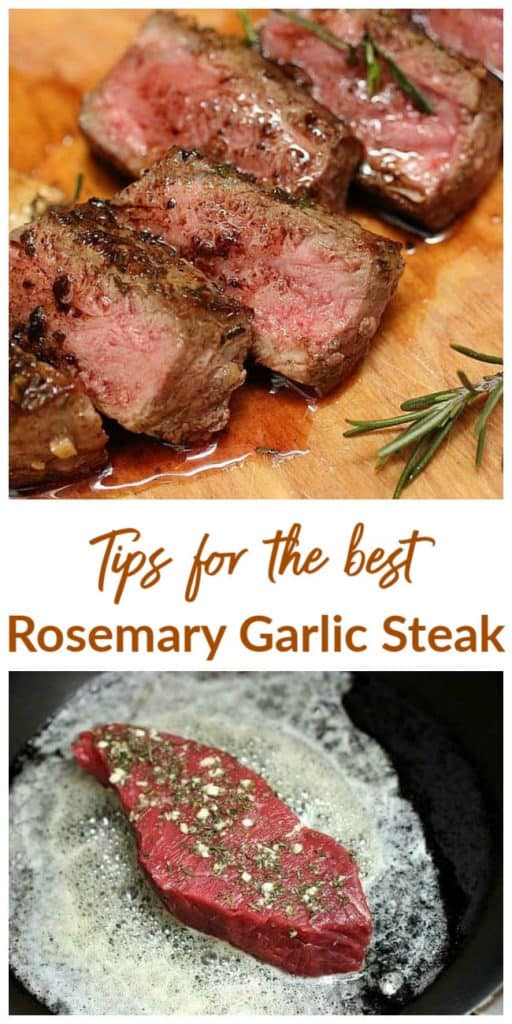
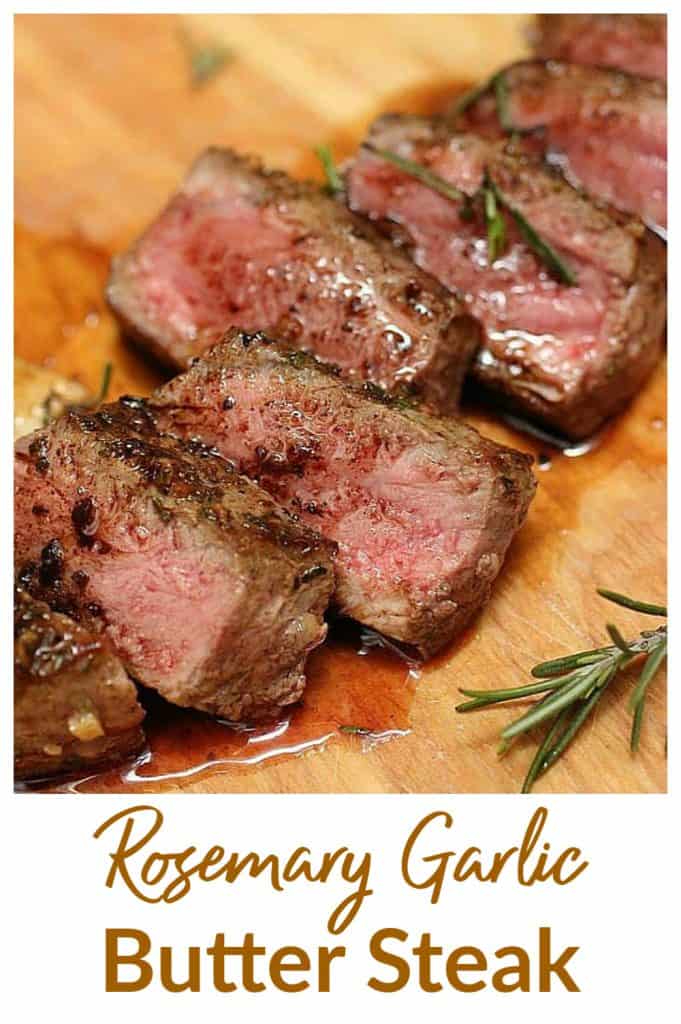
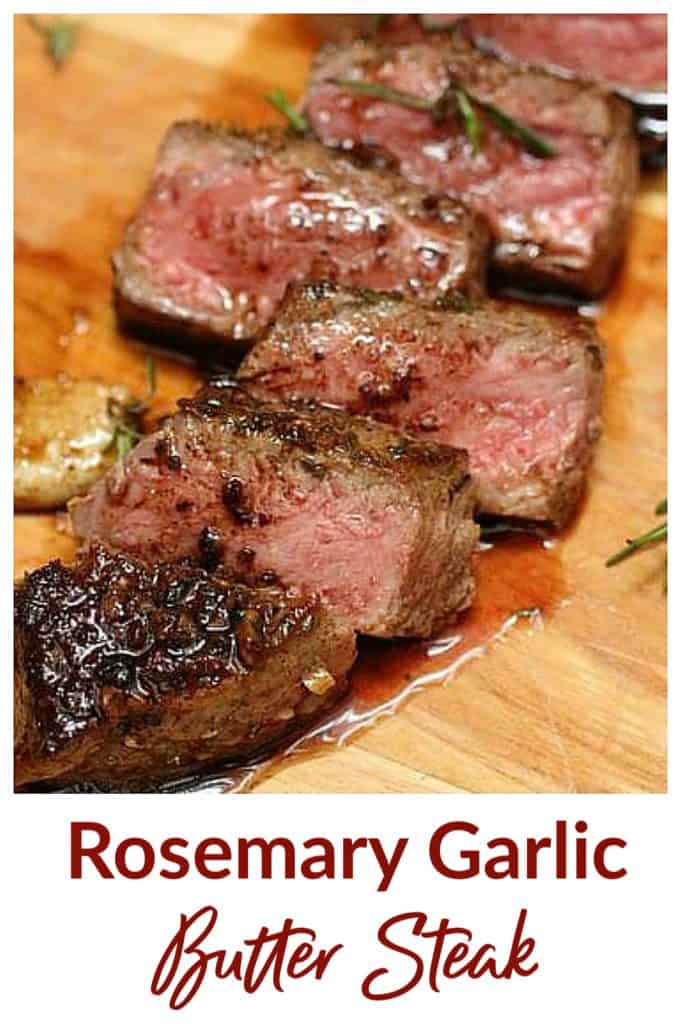
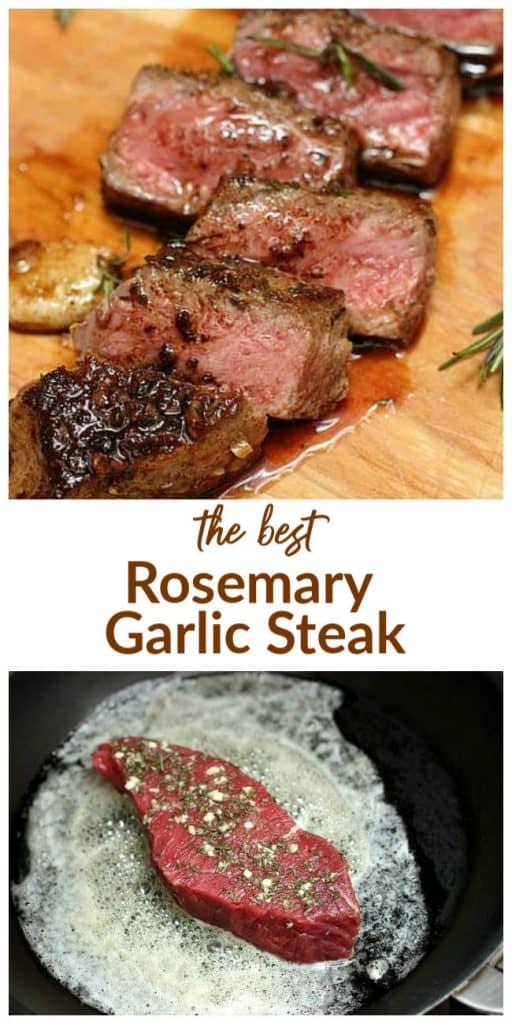
This is one of my star dishes,rosemary garlic butter steak, one I've been making forever, and that just never fails. It uses few ingredients and can be ready in 20-25 minutes. Just follow the tips below and become a master steak cook.
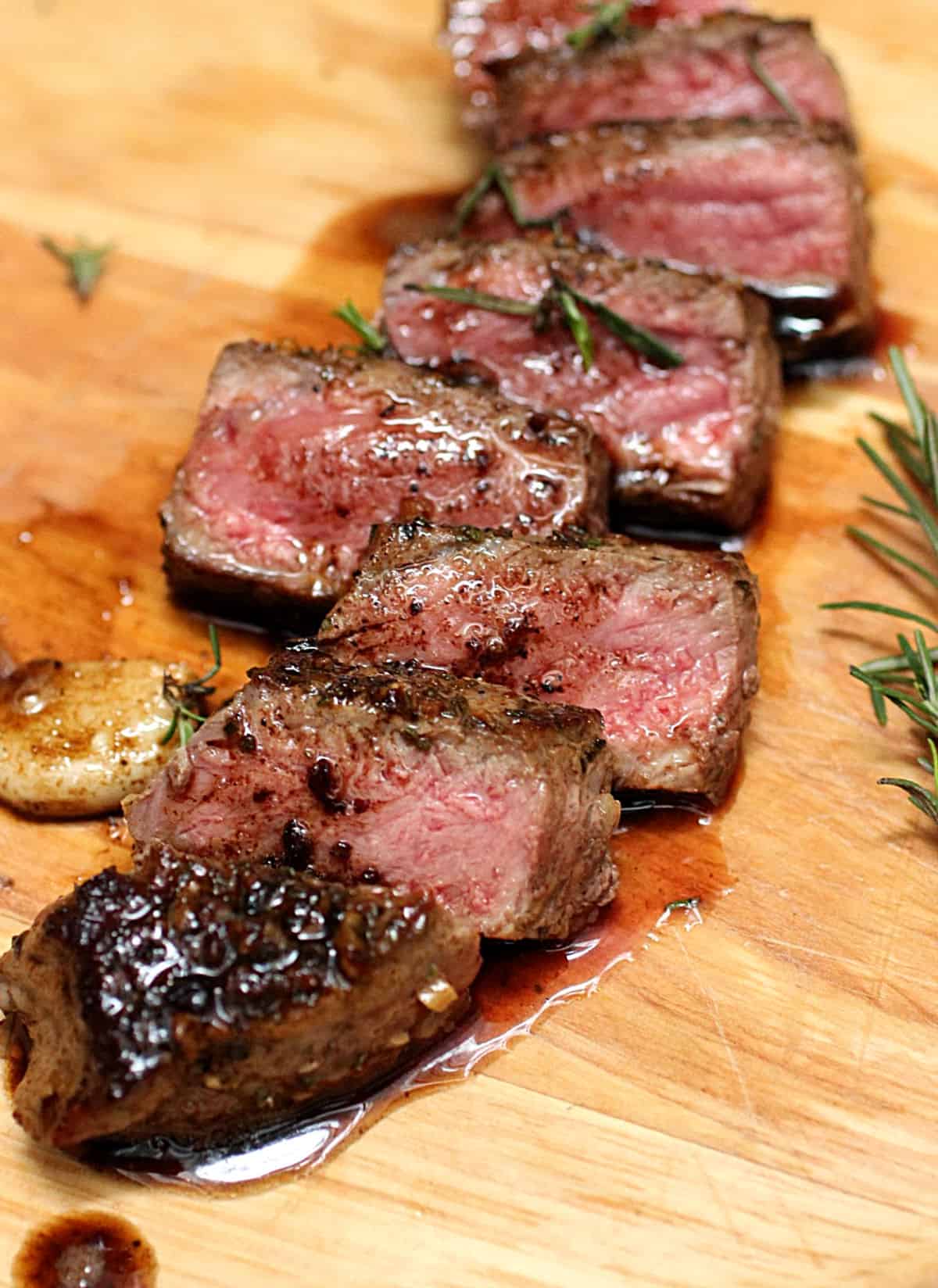
Originally posted in 2012, the text and images in this post have been updated to serve you better. The recipe remains the same, of course!
About steak
Now, I live in Argentina, wheremeat is officially our national food (looking for an authentic chimichurri sauce anyone?). It is a serious business.
Barbecue has become the number one choice here, our favorite thing.
And while our grilling would be considered plain for most of you - no marinades, rubs or additions of any kind while being grilled, except for salt and pepper - the fat in the meat does the flavor trick, and making a great piece of barbecue meat is no beginner's luck, no matter how many condiments you pile afterward.
The meat here is very fresh, no fourteen or twenty-one days waiting for it to age. Why wait? Slap that piece of red on the grill or skillet and eat it! Make mine medium rare, please.
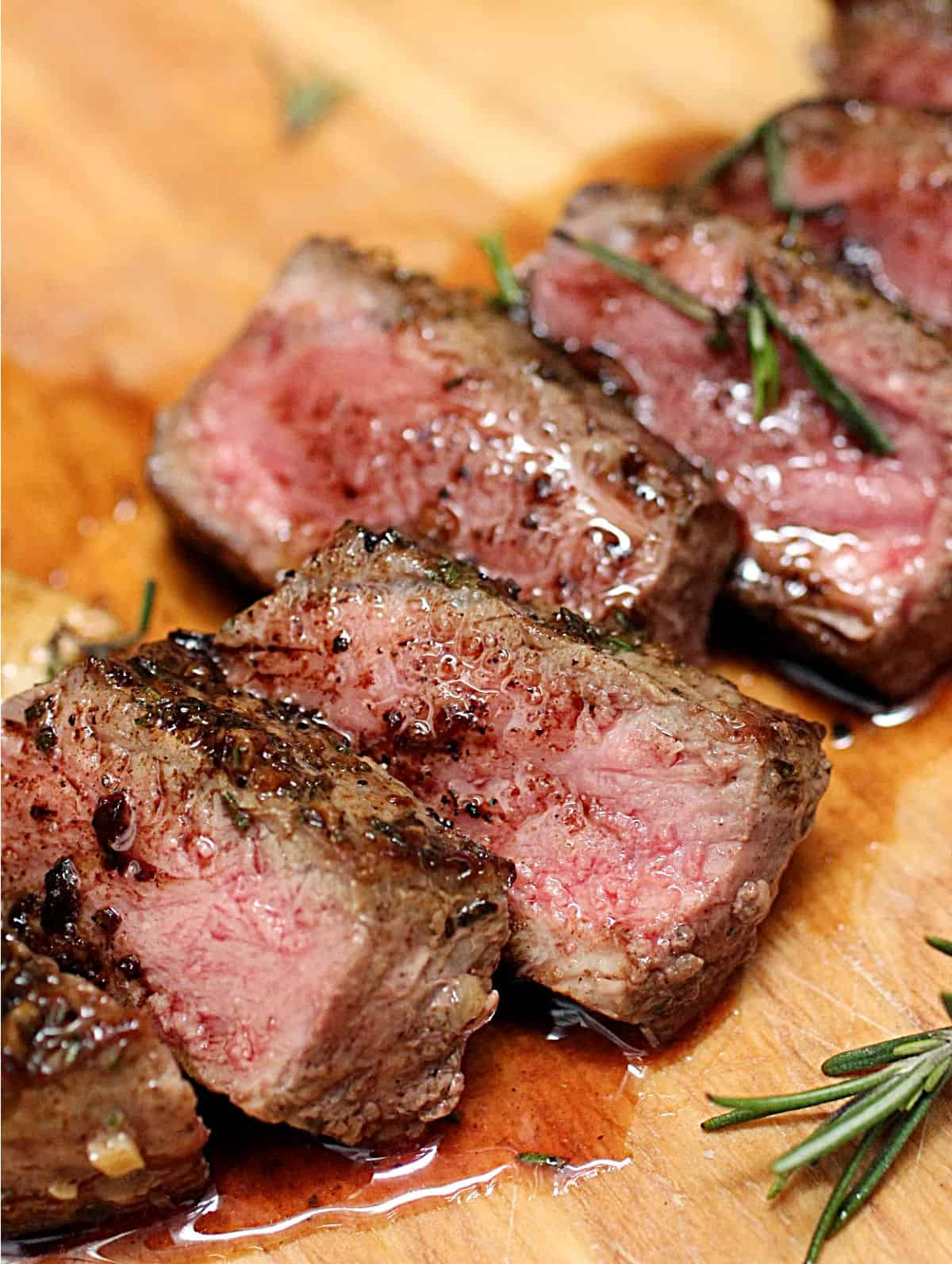
That said, I change it up a bit when I'm grilling meat indoors. So today's recipe comes with add-ons.
Few ingredients
- Steak: of course this is the star so buy the best you can afford, always.
- Rosemary: fresh is better, but in a hurry dried will certainly do.
- Garlic: fresh is the way because it can be chopped with the herb and salt.
- Butter: it gives the meat a great flavor, but oil can also be used.
- White wine: it's used to lift the bits that stick to the pan when the meat is cooked. It adds a great flavor, but use water if you want to, by all means.
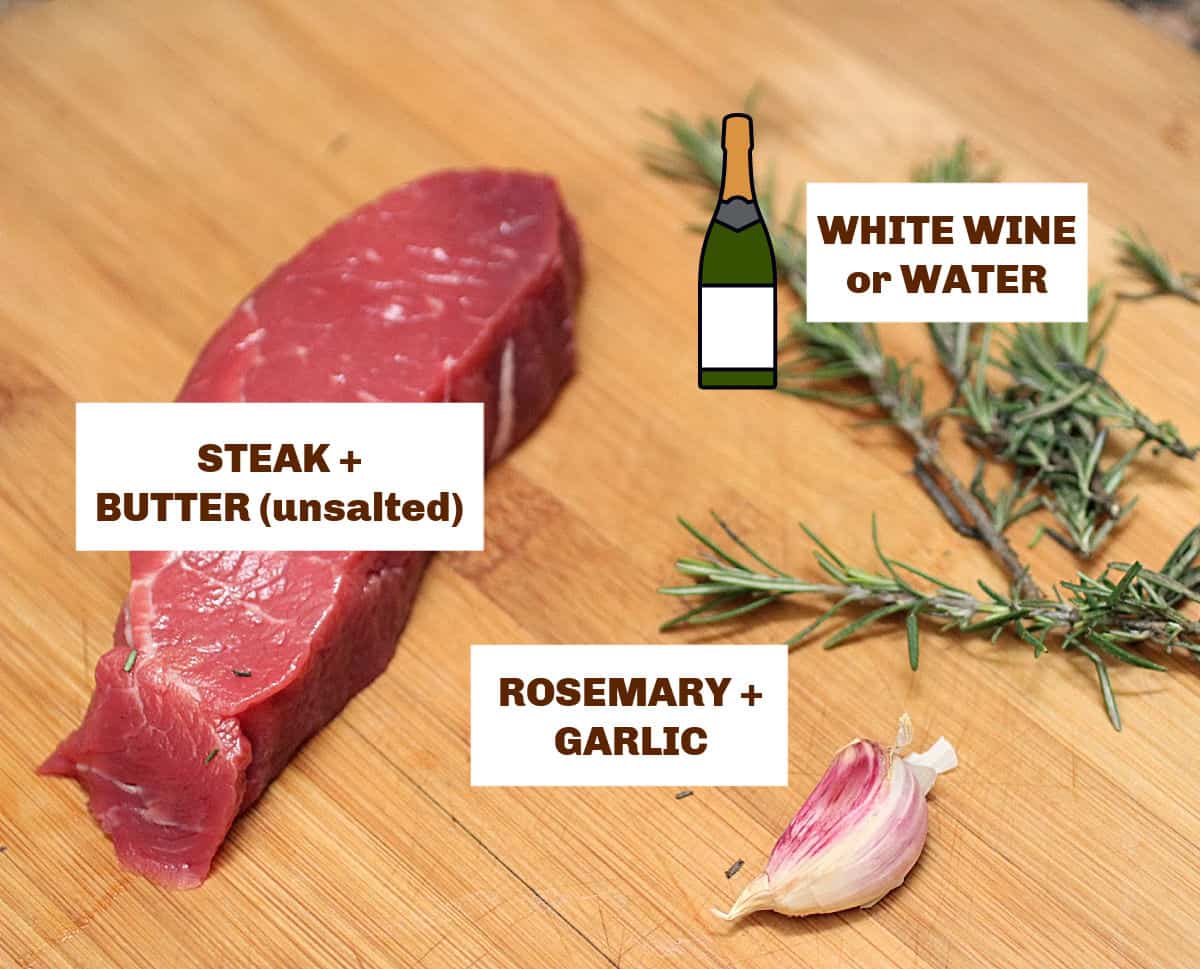
Why Rosemary and garlic?
Rubbing garlic, rosemary and salt(image below) has been my easy way of adding extra flavor to steak without a lot of work. Or time.
It addsSO MUCH to the end product, it's one of those simple secrets that you'll be forever grateful for.
I discovered it almost by accident and it's become a staple. It takes just a few minutes to prepare and the results are extraordinary!
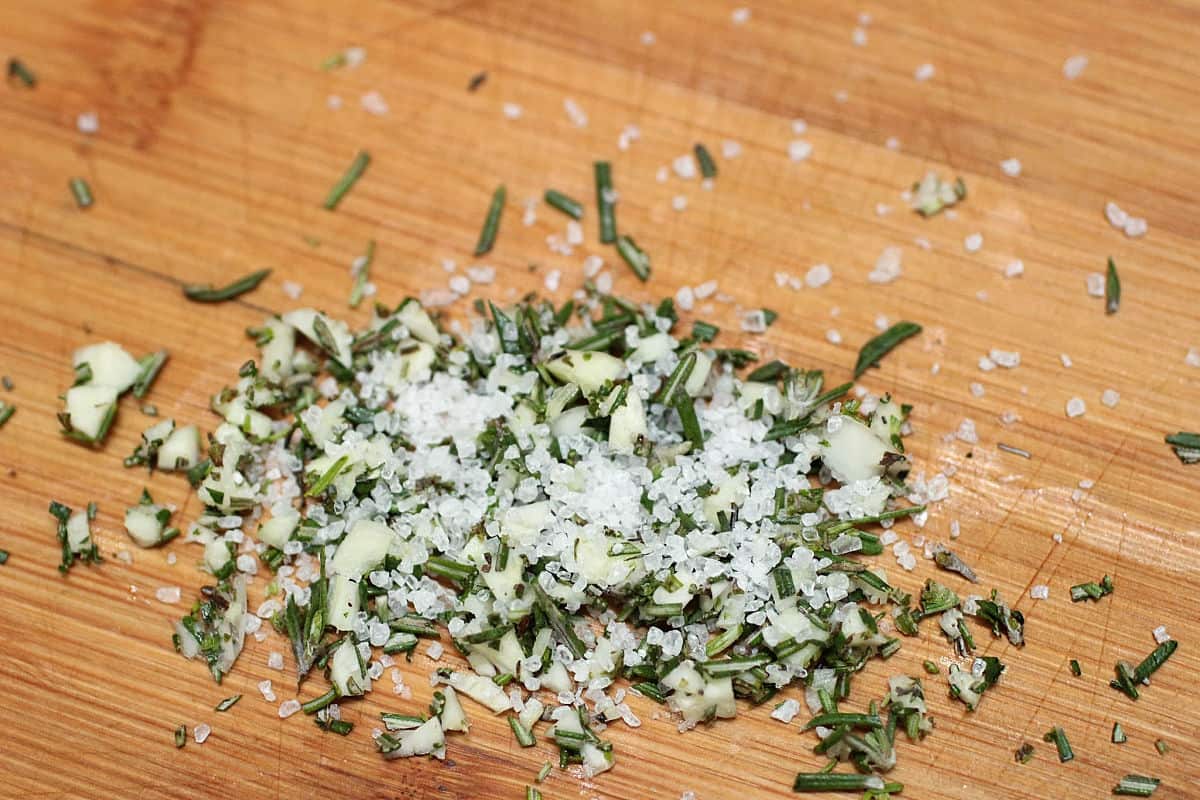
What type of meat should you use?
I have two cuts I swear by when making this garlic butter steak:
Sirloin strip steak:
Lean but flavorful and perfect for grilling indoors or out.
This is what I'm using today, and I stripped away most of the outside fat since I was making it in a skillet. When using the outdoor barbecue, I like to leave the layer of fat (see the second image here) so it chars slowly and adds even more flavor to the meat.
I don't know where you live, but here you can buy the whole piece of sirloin, a 5-6 kg (11-13 pounds) piece of meat that you throw directly on the barbecue and let it cook for a few hours. So amazing.
Rib-eye steak:
My favorite cut of meat when barbecuing outside.
It has two types of meat, lean and tender on one side, flavorful and chewier on the other.
This steak cut is amazing for marinating before cooking. It is a crowd-pleasing type of meat, at least in my experience.
I don't know where you live, but here you can buy the whole piece of sirloin, a 5-6 kg (11-13 pounds) piece of meat that you throw directly on the barbecue and let it cook for a few hours. So amazing.
How to cook it
They are few and simple, but make sure you use the right amount of heat so the steak doesn't burn. And read the tips below before.
First step
Rub the room temperature steak with the rosemary, garlic and salt mixture. Melt the butter on a skillet. Do so on a medium/high heat and add the steak when it foams.
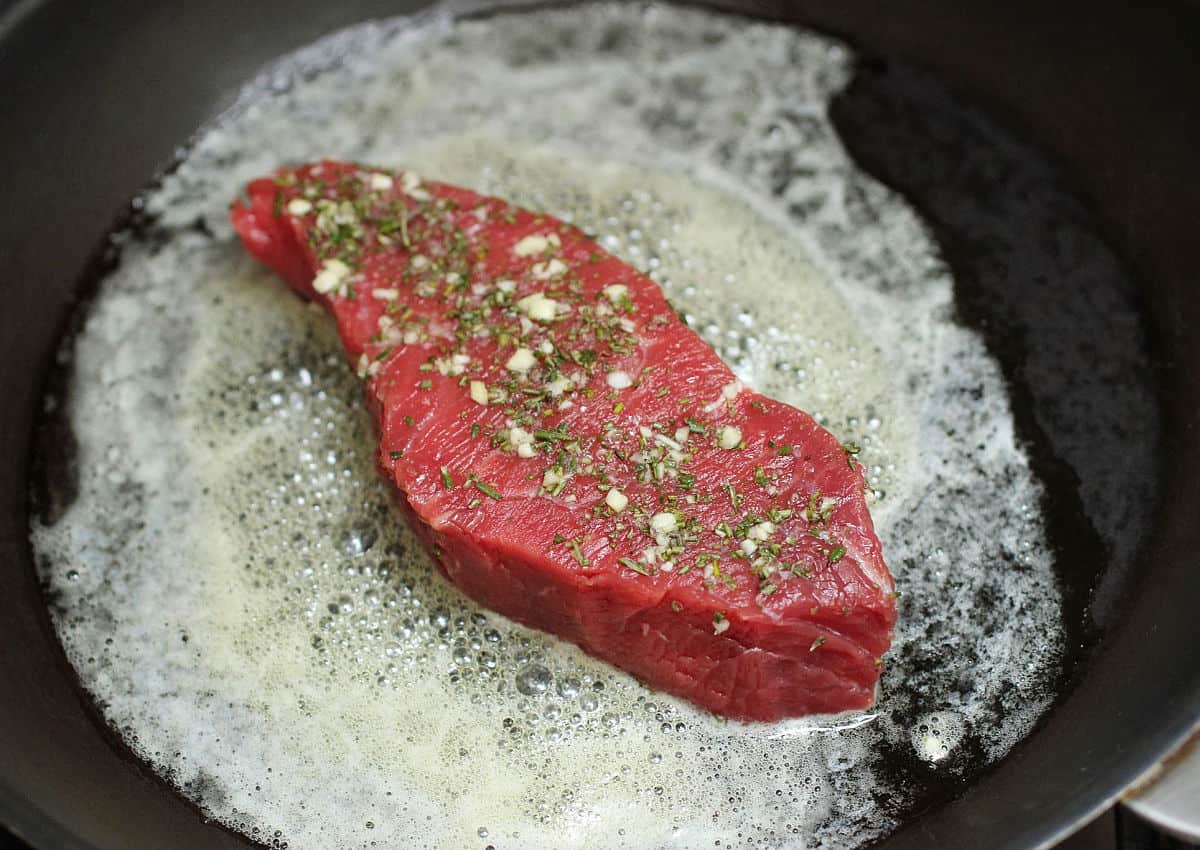
Turn over
The steak must be turned over half way to cook evenly. This will depend on how thick it is, so it might take a few more or less minutes. See below how the bottom half is still red as opposed to the upper half.
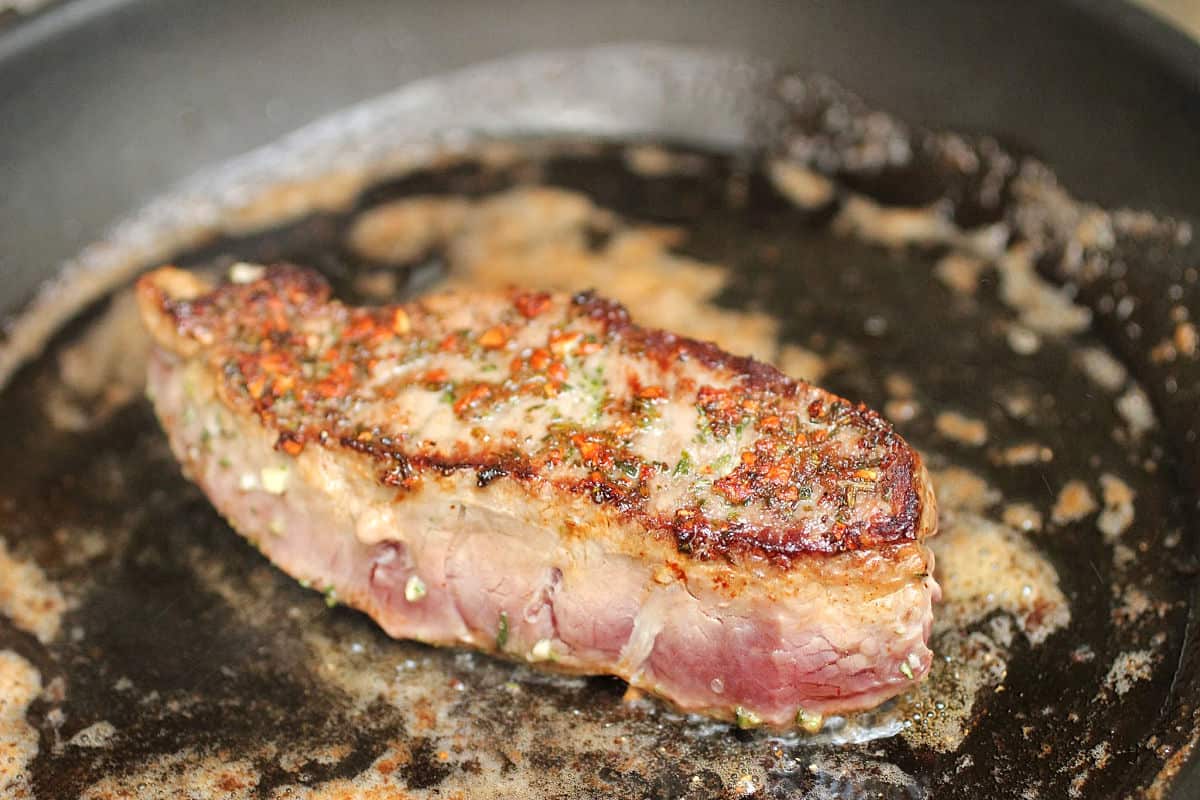
Add liquid to deglaze
A splash of wine or water is added at the end to lift up the bits that are stuck to the bottom (deglazing). You can skip it, but it will add a small amount of 'sauce' for the steak.
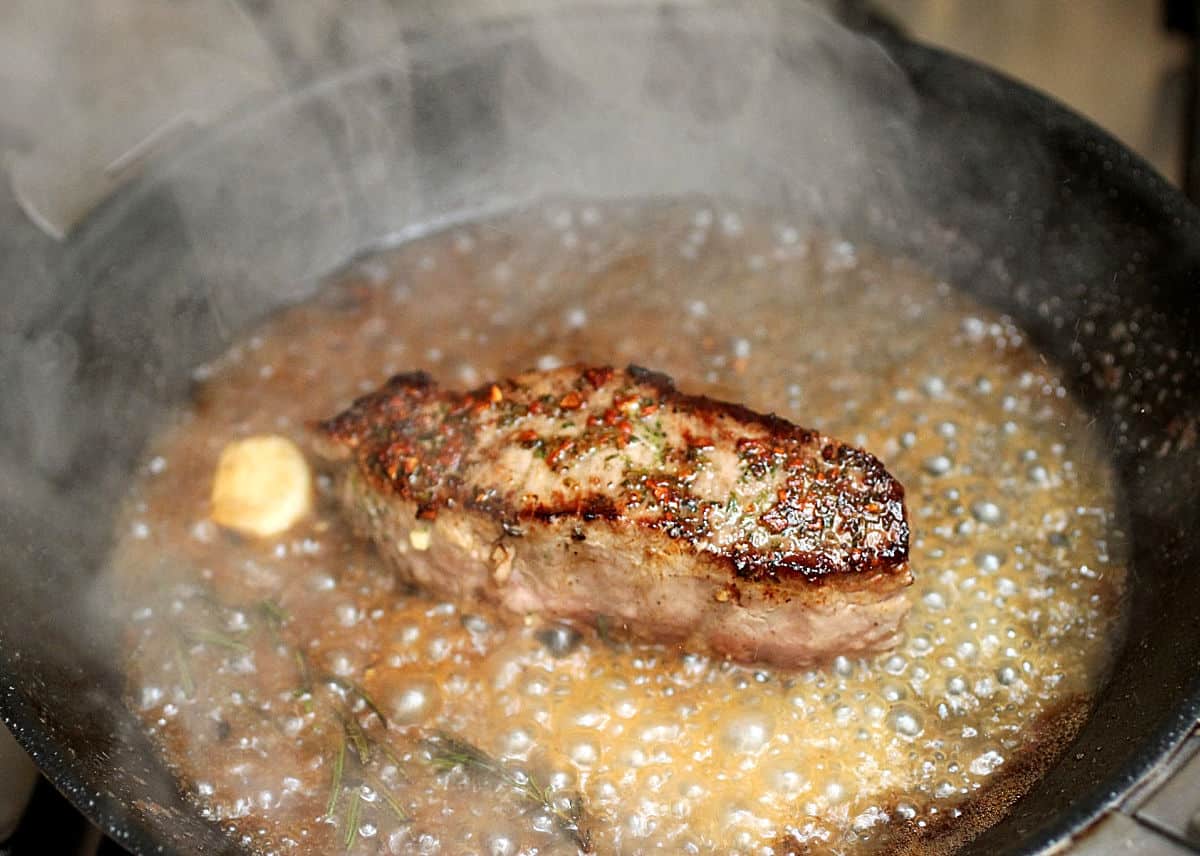
Resting time
Take the steak from the pan and let rest for 4-5 minutes before cutting. This allows the juices that have gone to the edges during cooking to rearrange themselves, so that when you cut you will have a consistently juicy piece of meat. Otherwise, the liquid drips from the meat and onto the plate the moment you cut it. For me, this is a crucial step.
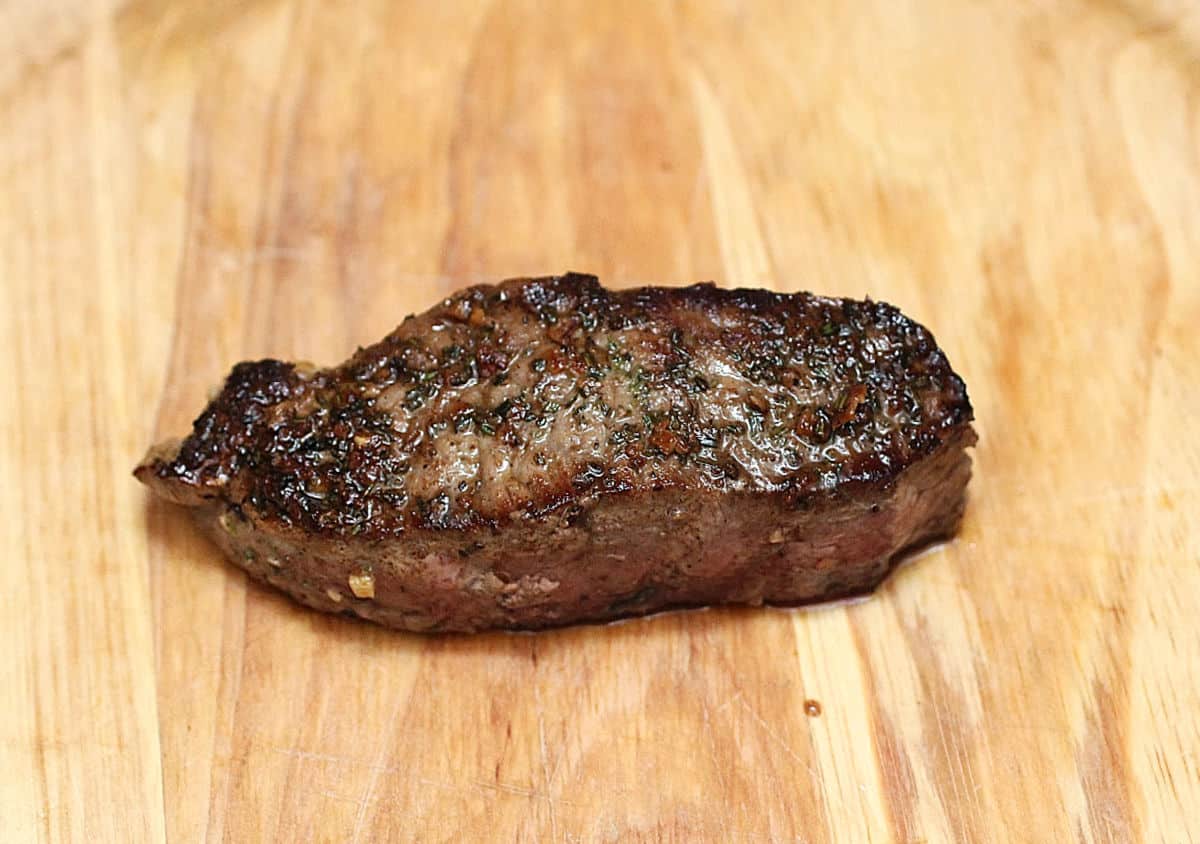
You justhave to try this amazing steak. Let it be known that you can make amazing Steak and Chimichurri Sliders with this recipe also.
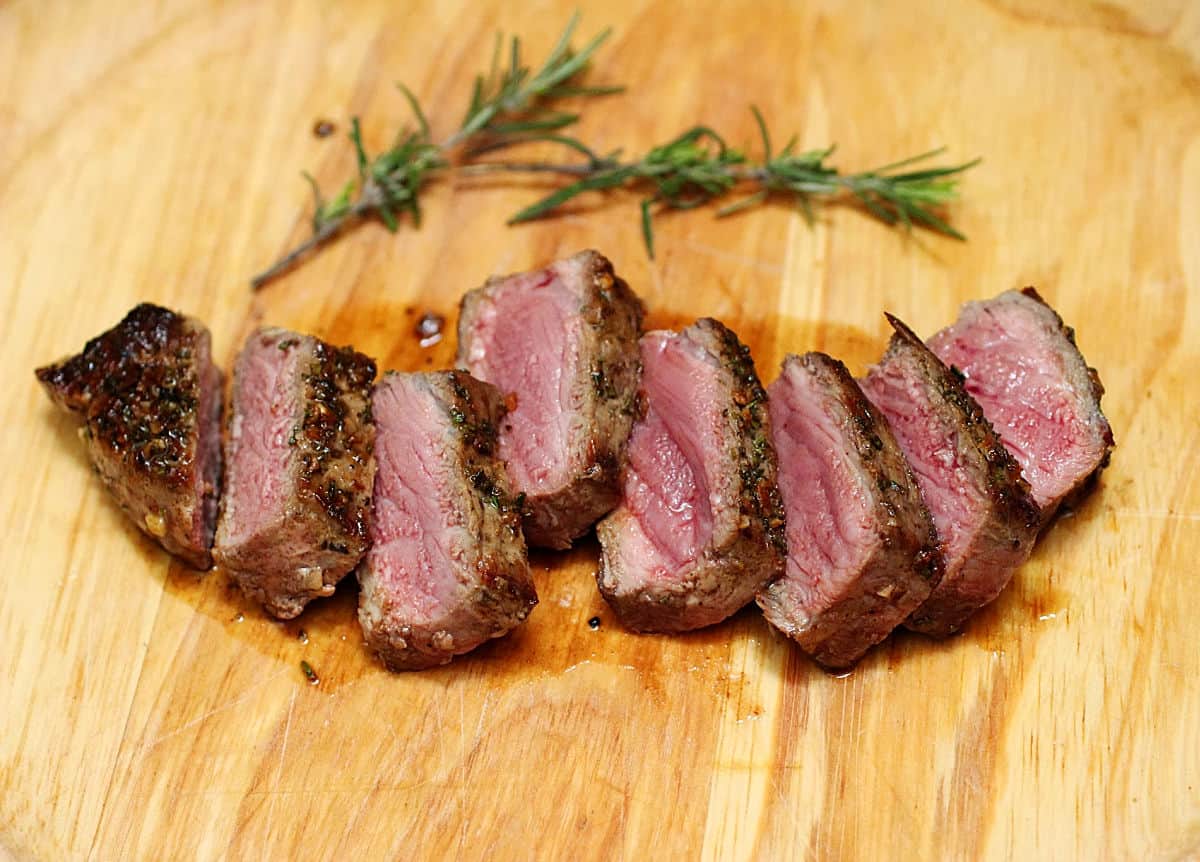
My tips for cooking the best steak:
- Temperature: always have the meat at room temperature. That way it'll be more tender. If it's frozen, defrost it overnight in the fridge. The less change in temperature while defrosting, the better.
- Salting: add salt right before it goes into the skillet. If you want to infuse some garlic and rosemary, rub them on the steaks, leave them at room tº for twenty minutes, and salt them at the last moment.
- Thickness: a steak should be two or three fingers (1.5 to 2 inches) thick if you want it medium rare with a good crust.
- Preheating: Make sure the skillet or steak iron griddle is preheated.
- Searing: the steak must be first seared - cooking it quickly over very high heat to seal in the juices - on both sides over high heat, but finished over medium/low (unless you like it very rare inside, almost raw). Otherwise, it will become flushed, as we say here, which means the outside is too dark before the inside gets a chance to cook properly.
- Resting: Always let it rest for 5 minutes after you remove it from the heat source. The juices go to the outer part of the meat piece while cooking, and resting redistributes them.
- Doneness: Never pierce or cut a steak to check for doneness because the juices will start to drip. To test them, lightly press them down with a fork or kitchen tongs. The more it gives, or the flabbier it feels, the rarer it's still is. When it's very cooked, the meat will hardly yield when you press it. I know many use a thermometer, and it's fine as long as the needle is thin.
Extra tip: did you know that the area below your thumb (yes, in your hand!), that thick mound that forms in the palm, is quite accurate when testing steaks? It's not perfect, of course, but it can help you start to feel when your steak is done instead of relying on a thermometer.
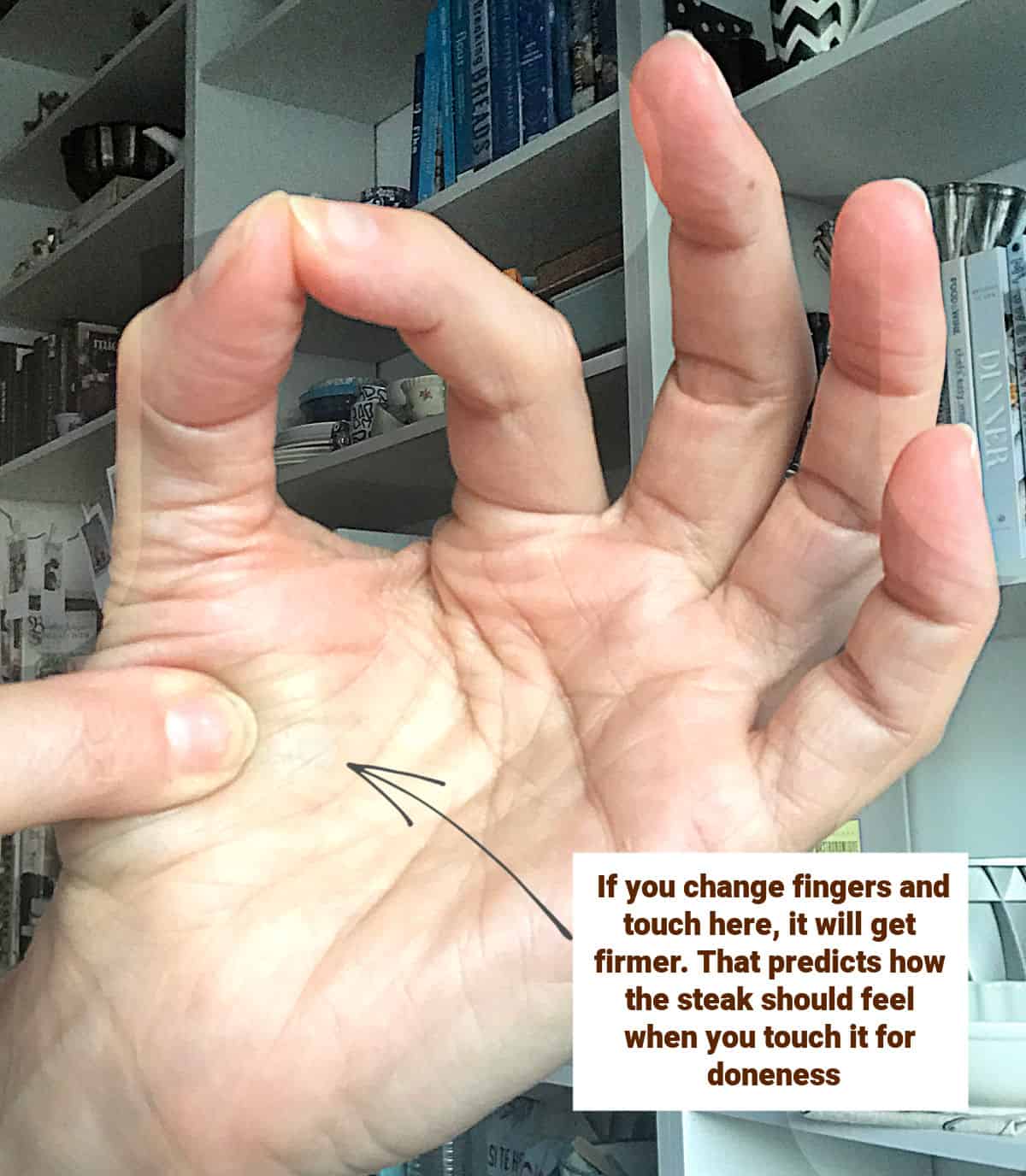
Rare: lightly join the tips of your thumb and index finger forming a circle with both fingers and press that area below the thumb (image above). It means that if you lightly press the steak while it's cooking (with a tong is fine), the pressure should be similar.
Medium rare: join the middle finger and thumb it gets a little tighter.
Medium well: touch the tip of your thumb with the ring finger
Well done: use your pinky finger.
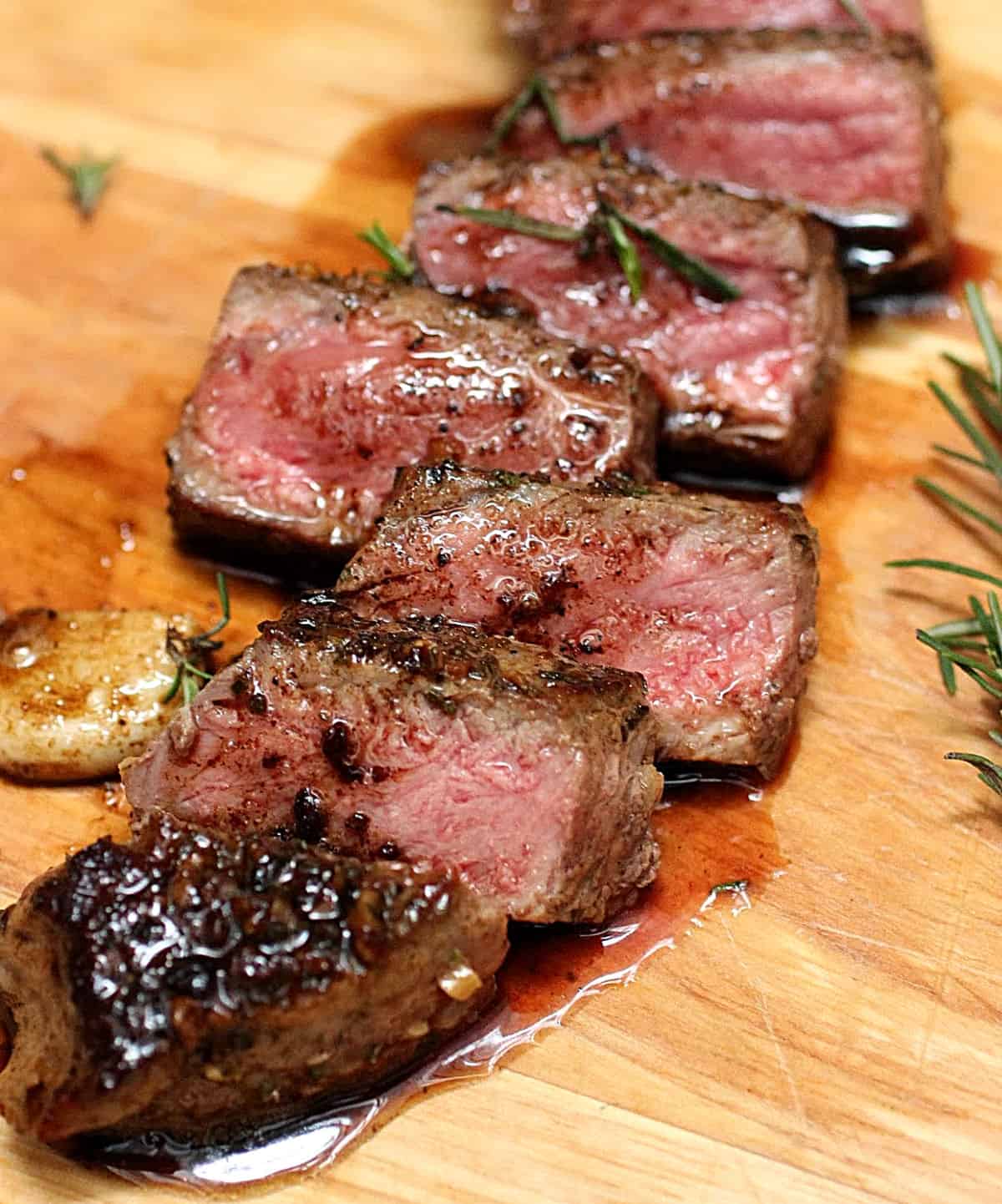
-
Best Chimichurri Sauce (authentic recipe from Argentina)
-
Chorizo Sandwich with Chimichurri - Choripan
-
Bourbon Barbecue Sauce (two recipes!)
-
Steak and Chimichurri Sandwiches
Let me know in the comments below if you made this recipe and loved it, and also if you had issues, so we can troubleshoot together. I love to hear what you think, always. Thanks for being here, it's much appreciated.
You might also consider subscribing to our FREE email series to Boost your Home Baking Skills! And our regular newsletter.
And let's connect viaFacebook,Instagram, andPinterest.
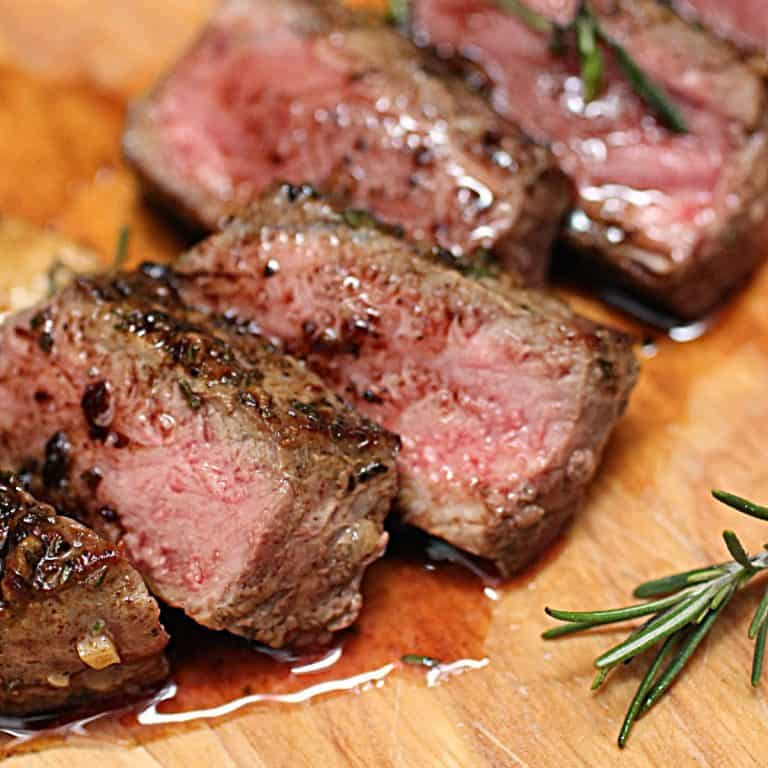
- 4 sirloin strip steaks, about 7-0z each (1 to 1.5-inches thick, room temperature)
- 2 or 3 garlic cloves
- 2 tablespoons fresh rosemary leaves
- 3 tablespoons butter
- 1 tablespoon olive oil
- Salt and pepper
- A splash of white or red wine
- Mince garlic and rosemary.
- Add 1 teaspoon salt (or to taste) and mince it a little longer. You can also do this with a mortar and pestle.
- Rub the paste over both sides of each steak.
- Heat a skillet over medium/high heat and melt butter. Add oil to prevent it from burning too much.
- Add steaks, season them with pepper and cook 1 or 2 minutes on each side.
- Turn it over, cook it 2 or 3 more minutes and add the wine (you can add extra garlic and rosemary now too to the skillet). It will steam furiously.
- Cook the steak 2 or 3 additional minutes for medium rare, remove steaks and let rest for 5 minutes.
- Meanwhile, cook the wine until reduced and a kind of sauce if formed.
- Slice the steaks and serve them with the sauce.
Notes
- Temperature: always have the meat at room temperature. That way it'll be more tender. If it's frozen, defrost it overnight in the fridge. The less change in temperature while defrosting, the better.
- Salting: add salt right before it goes into the skillet. If you want to infuse some garlic and rosemary, rub them on the steaks, leave them at room tº for twenty minutes, and salt them at the last moment.
- Thickness: a steak should be two or three fingers (1.5 to 2 inches) thick if you want it medium rare with a good crust.
- Preheating: Make sure the skillet or steak iron griddle is preheated.
- Searing: the steak must be first seared - cooking it quickly over very high heat to seal in the juices - on both sides over high heat, but finished over medium/low (unless you like it very rare inside, almost raw). Otherwise, it will become flushed, as we say here, which means the outside is too dark before the inside gets a chance to cook properly.
- Resting: Always let it rest for 5 minutes after you remove it from the heat source. The juices go to the outer part of the meat piece while cooking, and resting redistributes them.
- Doneness: Never pierce or cut a steak to check for doneness. To test them, lightly press them down with a fork or kitchen tongs. The more it gives, or the flabbier it feels, the rarer it's still is. When it's very cooked, the meat will hardly yield when you press it. I know many use a thermometer, and it's fine as long as the needle is thin.
- Prep Time: 15
- Cook Time: 10
- Category: main dish
- Method: Grilling
- Cuisine: Argentinian
Nutrition
- Serving Size: ¼
- Calories: 513
- Sugar: 0 g
- Sodium: 685.9 mg
- Fat: 37.4 g
- Carbohydrates: 0.7 g
- Protein: 40.5 g
- Cholesterol: 171.6 mg
Keywords: steak, steak dinner, meat
Source: https://vintagekitchennotes.com/rosemary-garlic-butter-steak-tips/
0 Response to "Can U Stick Rosemary in Beef"
Post a Comment